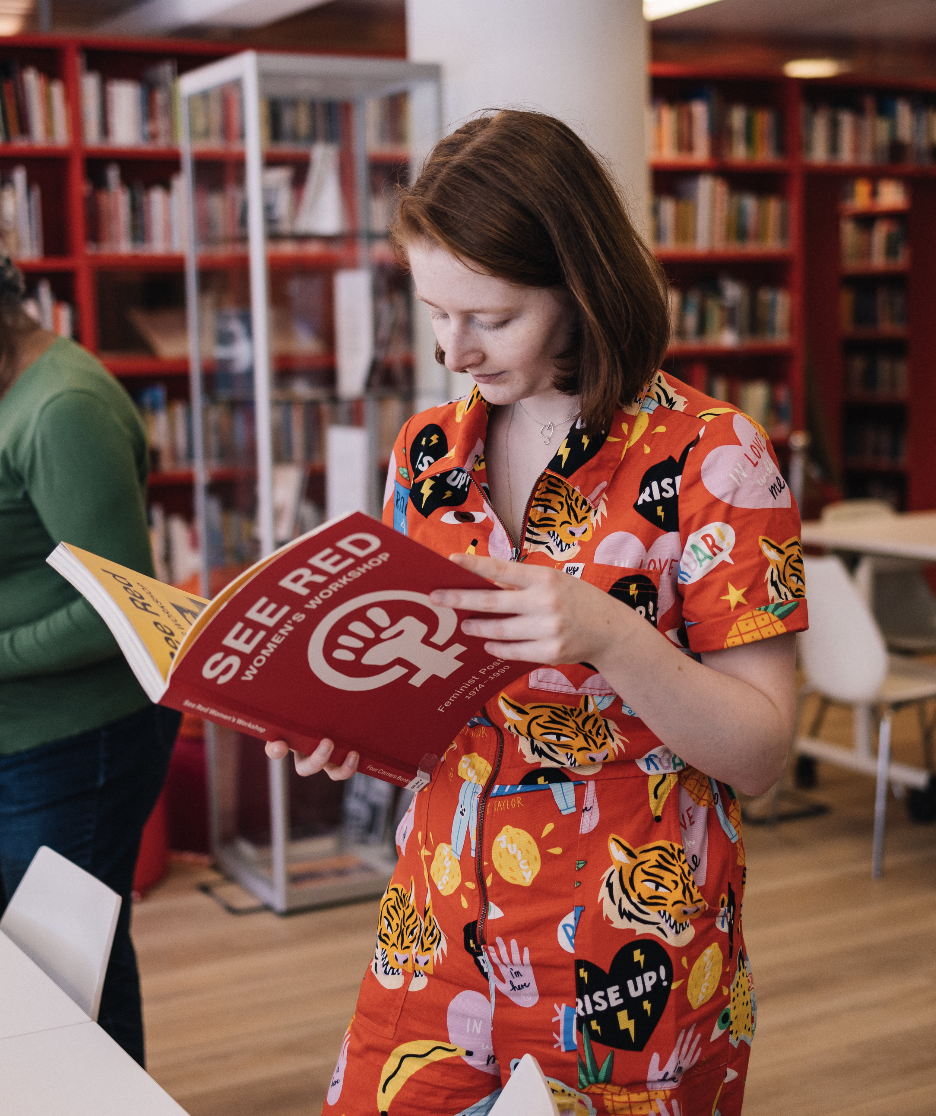Sitting in on an M.A. class by René van Beek at the Allard Pierson Museum
Jill Decrop Ernst
03 April, 2024
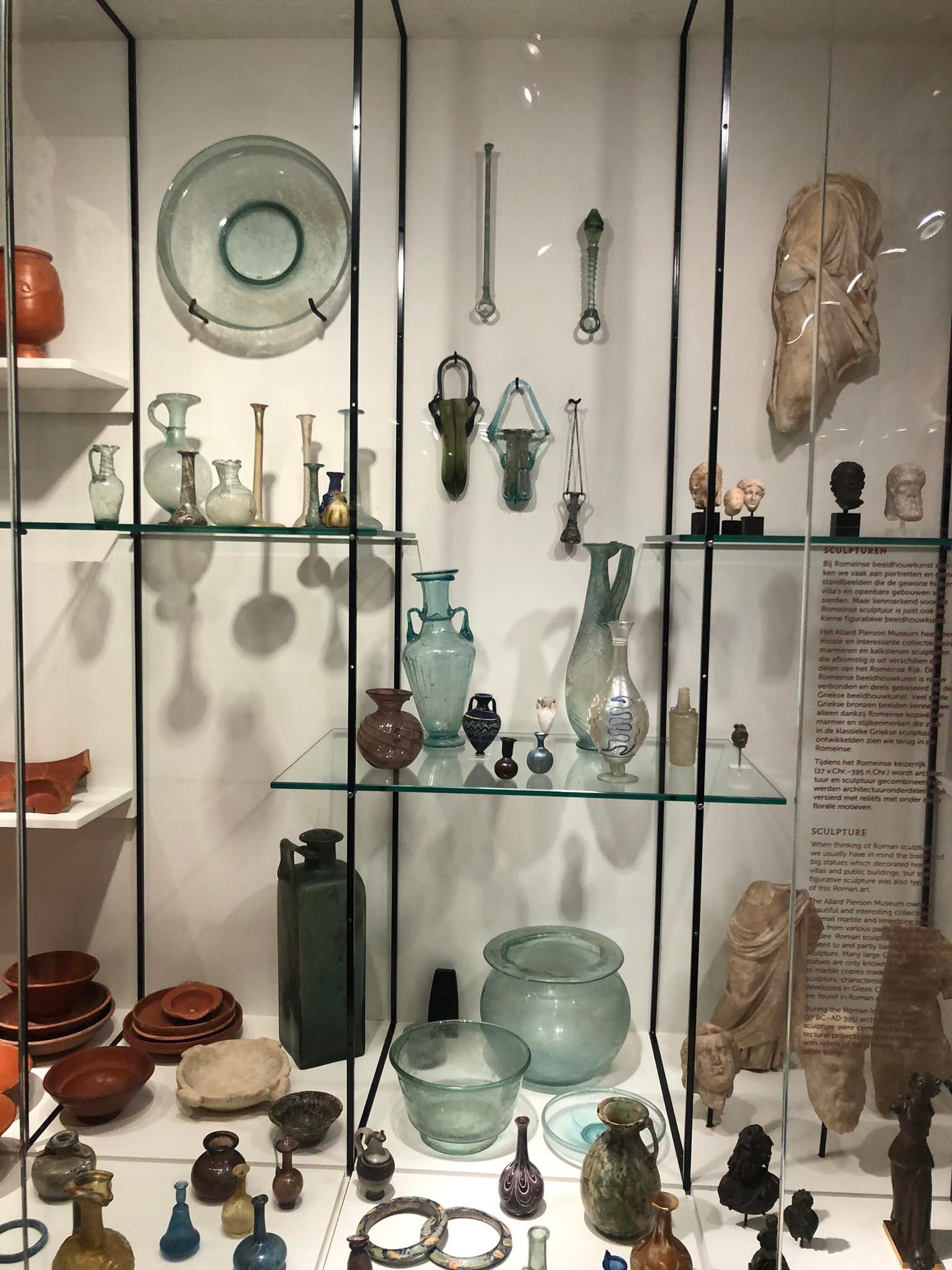
Glass objects in the Allard Pierson (2022).
As part of my research for Teaching with Objects, I try to attend as many lessons as I can. Curator of the Classical world René van Beek has welcomed me in one of his M.A. classes on the restoration and curation of Roman glass. His question to the students was: what is real, and what is fake?
Where are we?
The lesson starts in the gallery of the Allard Pierson Museum of Antiquities, right in the heart of Amsterdam. The museum exhibits cultural heritage artifacts ranging from Egyptian antiquities to atlases by Joan Blaeu. The first part of Van Beek's lesson took place in their gallery (see Fig.1&2 ).
I joined the M.A. students (five in total) as we walked through the gallery, our attention was pointed to four glass objects.
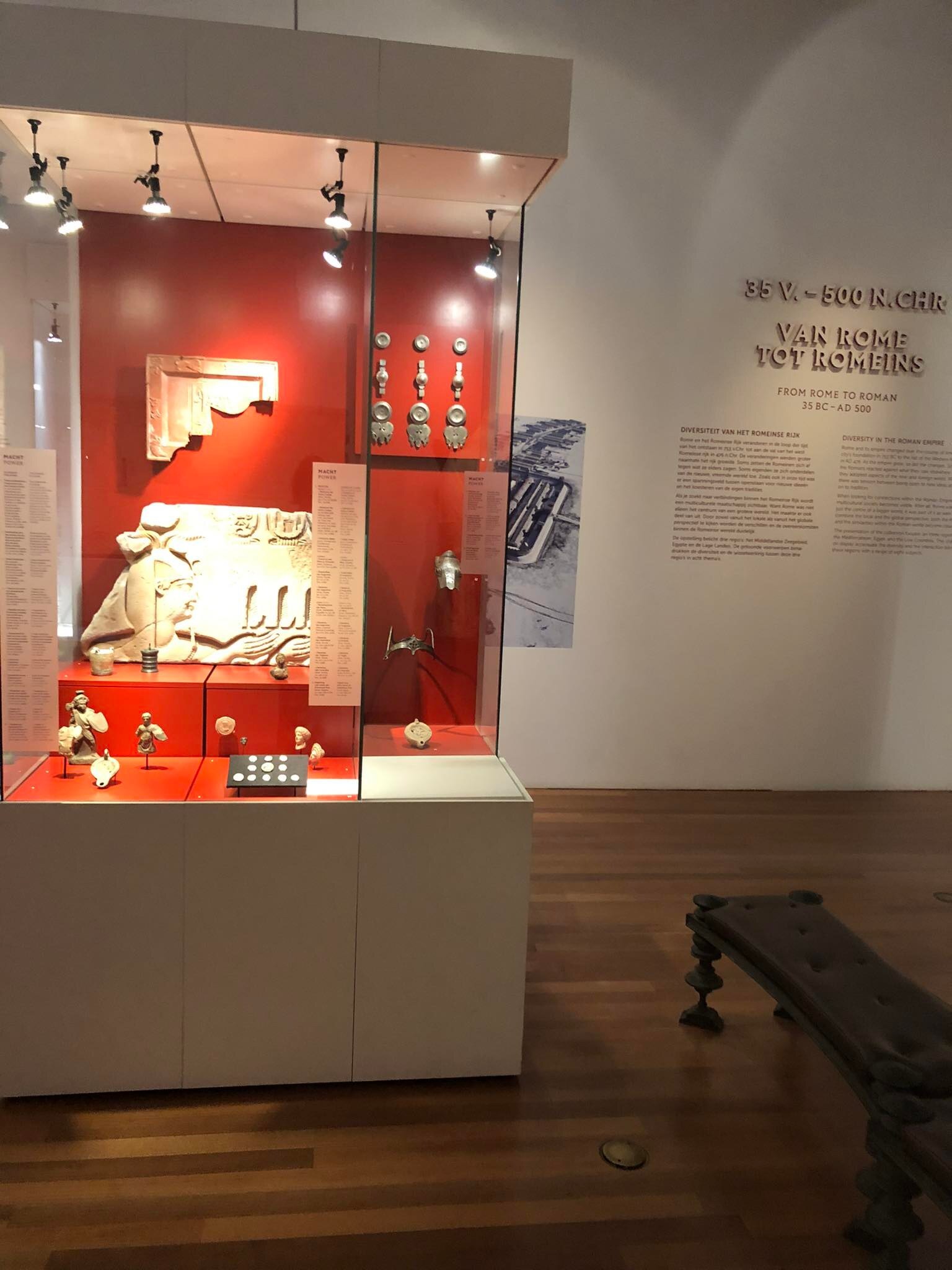
Figure 1. Display in the Allard Pierson.
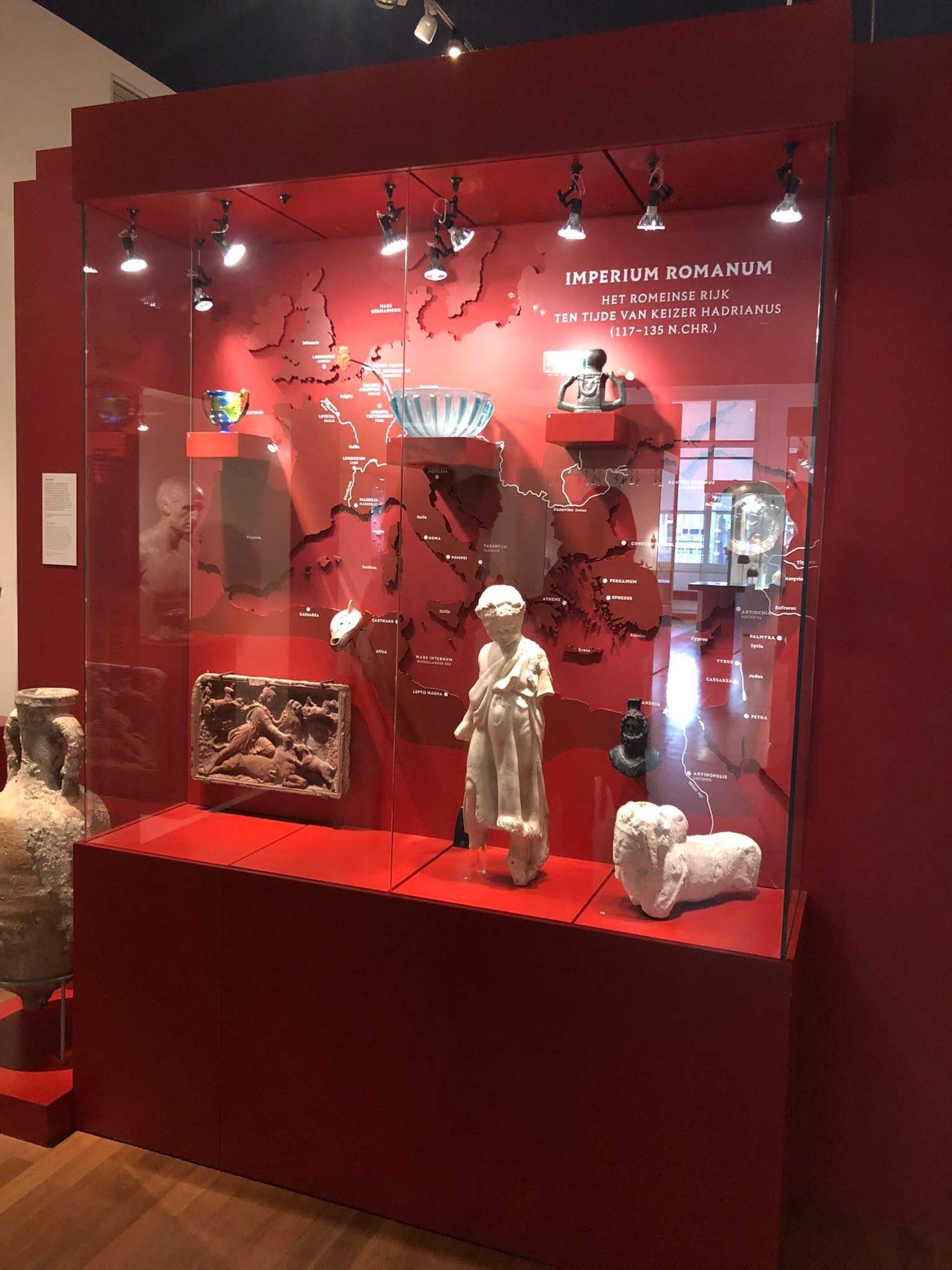
Figure 2. Allard Pierson display.
The four objects were surrounded by other artifacts from other collections, creating an immersive feeling. I noticed that the other objects also drew my attention, and the same happened with some of the students. Moreover, during this phase of the lesson, objects are behind a glass, meaning that students cannot touch them. Everyone was excited, with our noses almost touching the display, getting as close to the objects as possible. Like the students, I also tried to take pictures of the objects on display, however, the glare on the glass made it difficult (see Fig. 3).
For more information on the benefits and challenges of in presence lessons see section 1.1 In presence, digital, hybrid OBTL in the State of the Field.
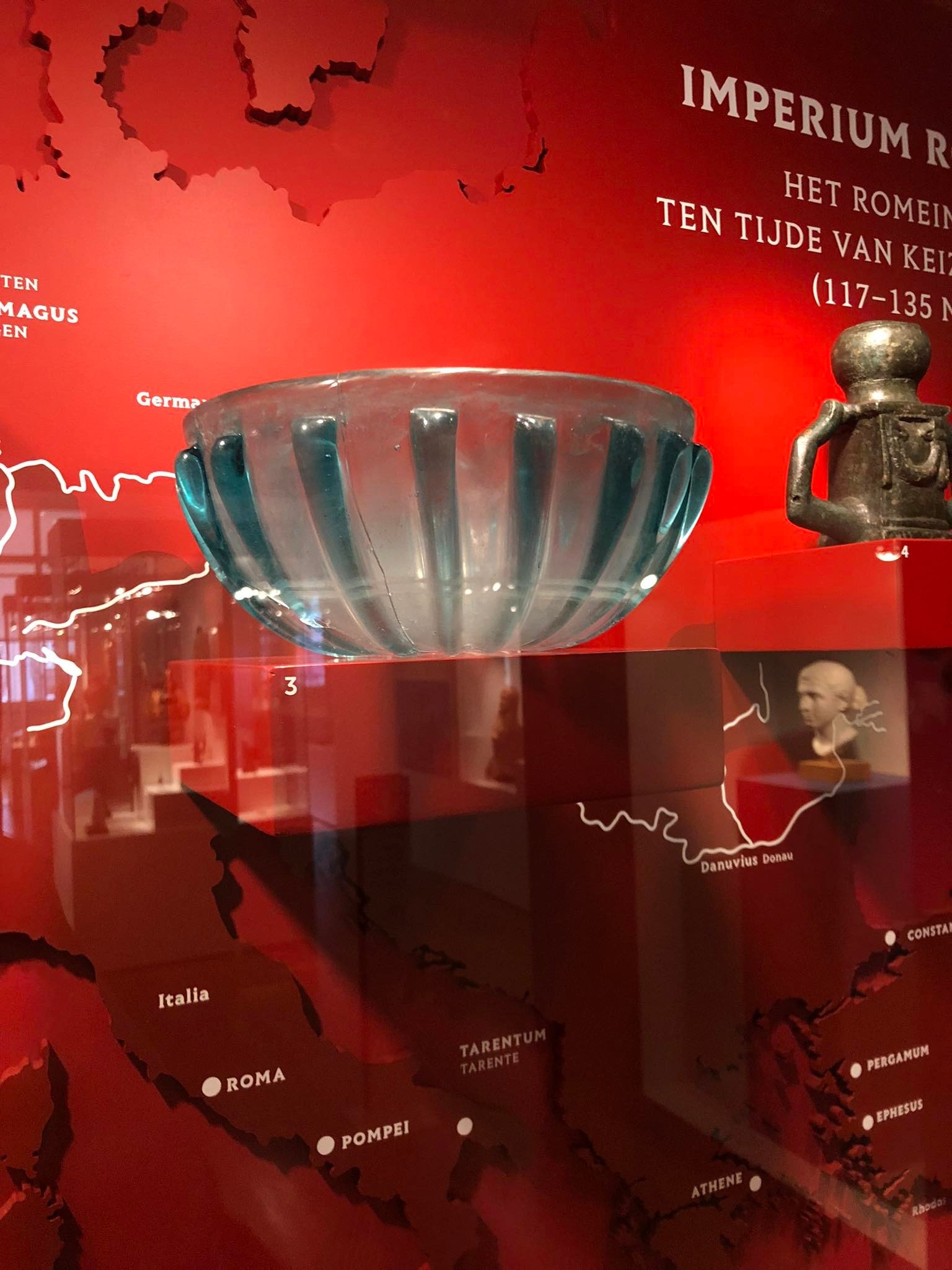
Figure 3. Picture of a blue glass bowl with a glare.
While there are no other visitors, the gallery is buzzing with noises from work in progress. As we approach the window where the last object is exhibited, the sound from a tv presenting the collection adds to the background noise (see Fig. 4). Imagine that the space would be filled with other visitors, then I can imagine that it will become a challenge for the educator and the students to remain focused.
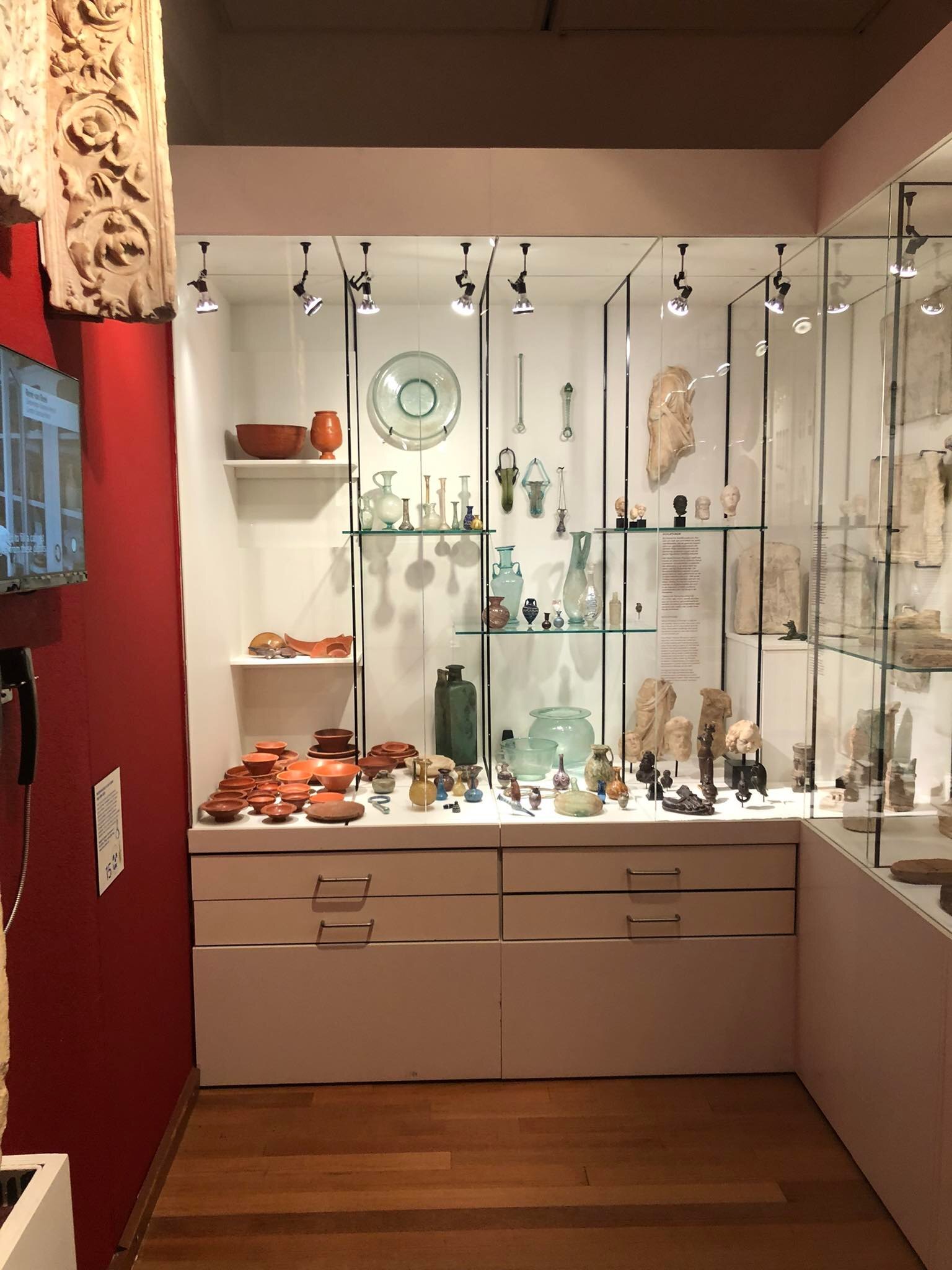
Figure 4. Last stop of the gallery visit at the Allard Pierson.
We then leave the gallery to go to a classroom, where a series of Greek and Roman glass objects are shown and handed out to students to be touched. These objects are different from the ones shown in the gallery. The class offers a much calmer environment as no noises from outside can be heard (see Fig.5).
For more information about teaching archeology, restoration and conservation, and museum studies with objects see section 2. Benefits and challenges of teaching with objects in different fields in the State of the Field

Figure 5. Classroom at the Allard Pierson before students arrive.
In the gallery and the classroom, the confrontation with objects is quite different. Not only because of the atmosphere but also the context in which the objects are presented. In the gallery, the objects and description add a lot to the context in which the objects were made and highlights curatorial decisions. In the classroom, students have more opportunities to dive deeper in each object, while they are still surrounded with other similar objects.
Preparation
For van Beek, preparation involves collaboration with the collection management department at the museum. Some days before the lesson, he asks his colleagues to access the objects that he needs in his classroom from the storage. In this case he picked a series of glass objects. The day of the lesson, before students arrive, van Beek goes to the department to check the objects before they are brought to the classroom, where students will inspect and touch them (see Fig. 6&7)
During the lesson, students and the curator need to be very careful with the objects. For instance, they use gloves to handle artifacts and put them down on foam cushions when they are not being touched. All these precautions show how careful the museum is with their collection. Before the start of the lesson, all objects are put on a table in line, across from where students will be sitting.
To prepare to handle these objects, students attended a lecture on glass. This took place prior to their visit to the museum and on a different day. It was given by another educator probably in a lecture hall in their faculty.
For more information about lesson preparation see section 3. Lesson preparation in the State of the Field
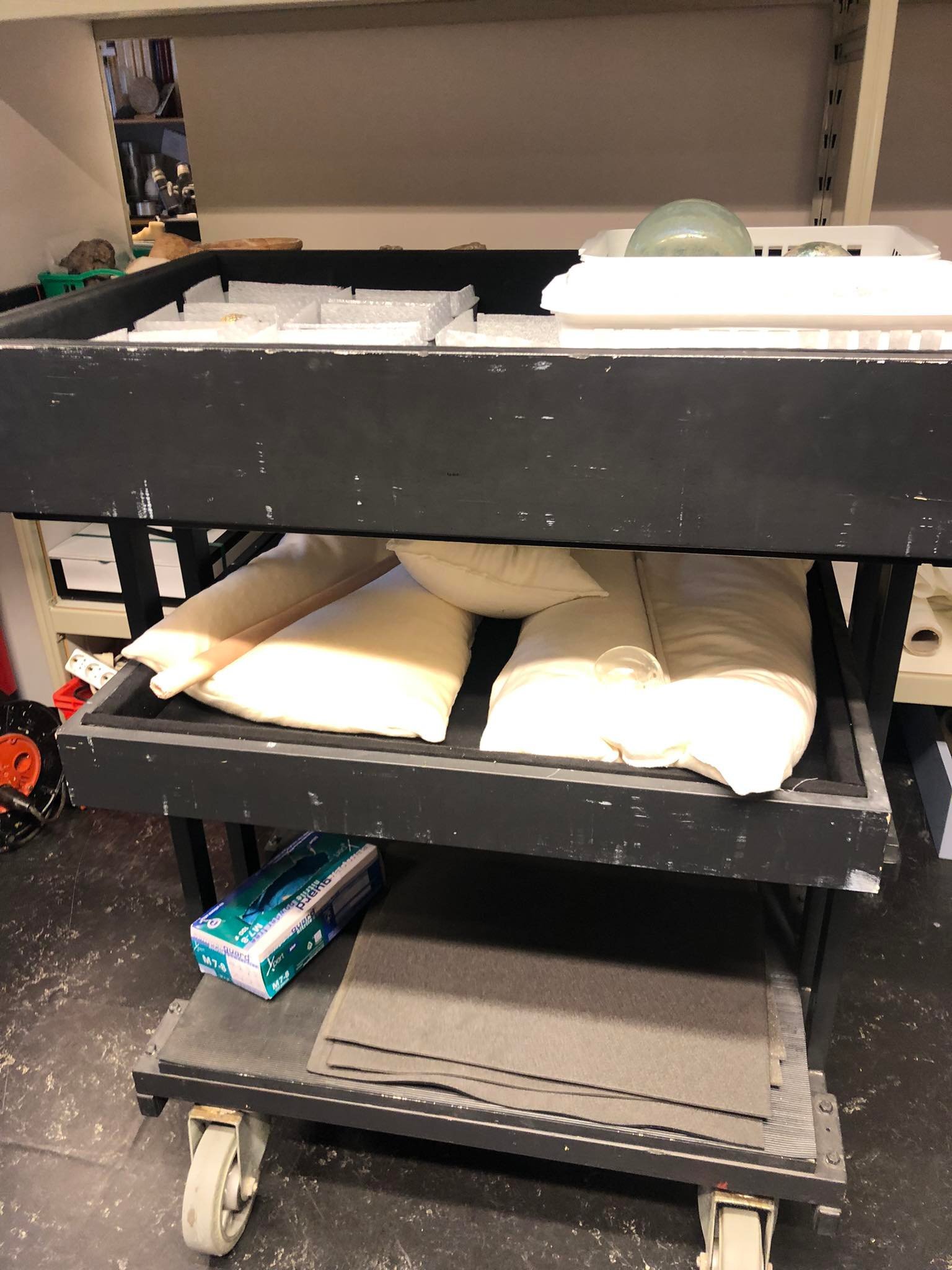
Figure 6. Trolley with objects prepared by the collection management department.
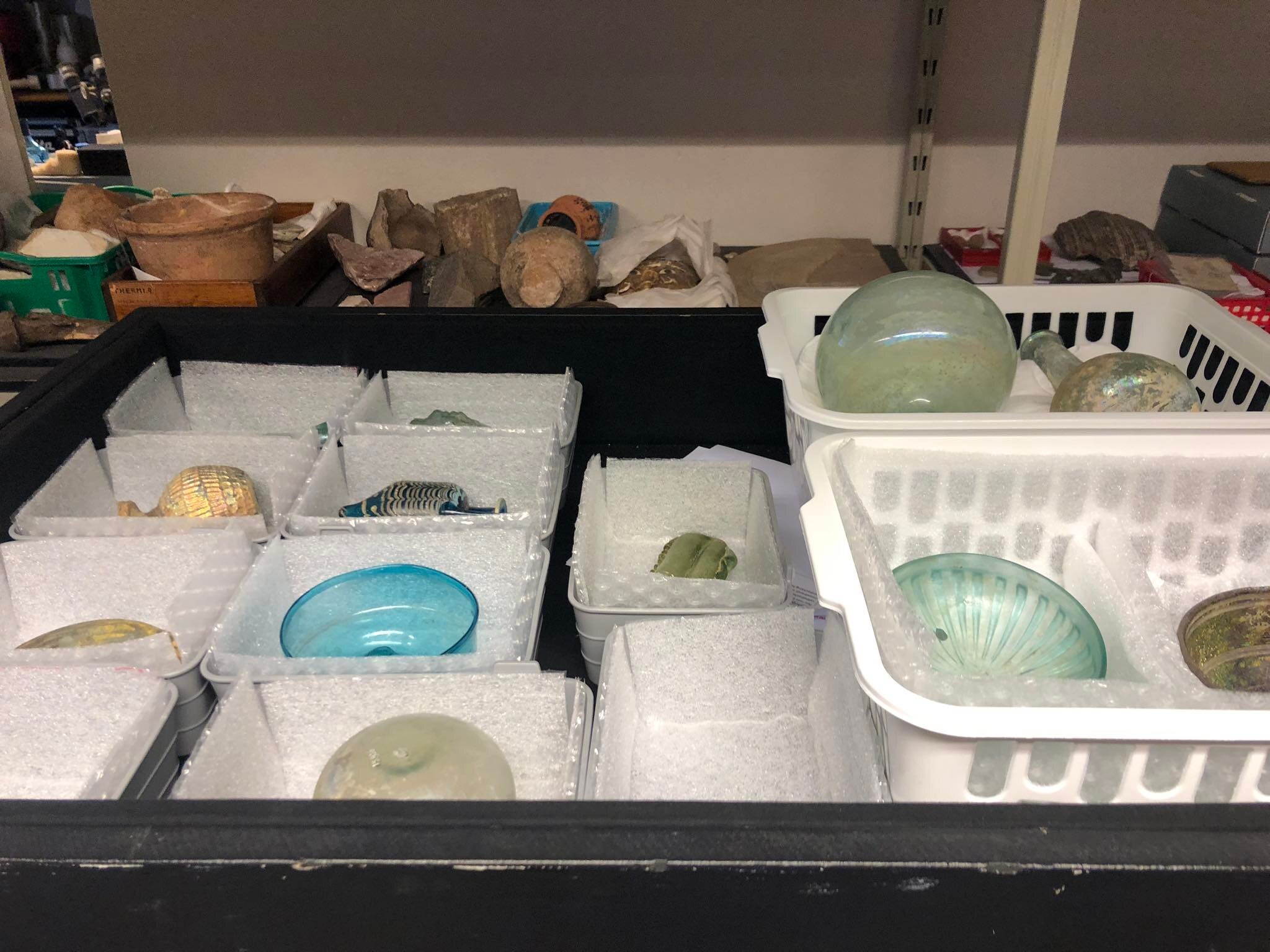
Figure 7. Objects prepared by the collection management department.
The lesson
As we arrive in the museum, van Beek begins the lesson by introducing the program. We are first going to the gallery before moving to a different room where students have the opportunity to inspect and touch the objects.
In the gallery, students are shown some of the objects from the collections while discussing and reflecting on curating and restoration practices. Students also learn about the acquisition process and the history of the objects before being acquired. We learn about how certain objects are preserved and the ideas curators have about the restoration of these objects, what is visible and invisible, why some objects are handled with gloves or not, For instance, the curator and students talked about the surface of one of the glass objects and whether or not it was original.
The next part of the lesson takes place in the classroom where one by one or in groups of two, students are handed all the objects brought to class. For each object, a picture of similar objects are shown on a PowerPoint. Students are also shown two videos on glass casting. The students and I learn about objects’ history and how they were made. As they touch objects, the curator draws their attention to different aspects such as air bubbles, shimmer, or weight, encouraging students to compare artifacts. In analyzing objects, students learn that some of the objects they are manipulating might not have been “real”. For instance, it was discussed that the blue bowl might have been a modern object someone bought at a market and added to the excavated objects found (see Fig. 8).
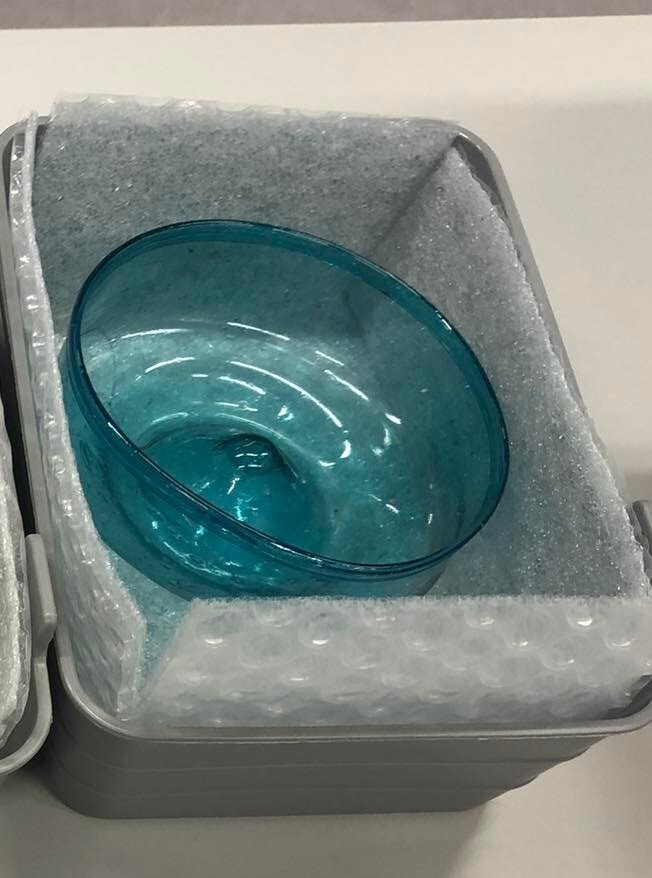
Figure 8. Small blue bowl in protective basket.
To further explore the physical features of the glass objects, students use the flashlights of their phones to shine through them. Extensive pictures of the objects are also taken. As they do so, students and the curator reflect on the difficulty of taking pictures of glass objects as photos cannot capture their shimmer, rendering them opaque. Similarly, photos on the slides are mentioned to feel flat.
Overall, the lesson seems to take an “interactive lecture” format. The curator, standing in front of the students, talks the most, while handing the objects to the students. This seems to be the first session of a series, as students will have other lectures at the Rijksmuseum to further engage with objects.
Students' perspective
The 5 Masters students who attended this lesson with me have experience with object-based teaching and learning. For instance, they had a prior session on ceramics with van Beek. As a result, students do not seem to encounter any struggle to engage with objects.
Of course, like in any lesson, not all students are engaged. Van Beek reflects that most of the time, two of the students will be very engaged, two less, and the last two will be “in the middle”. He adds that the level of engagement goes in waves and depends on the objects. Some students feel more drawn to specific objects. For instance, in this specific lesson, students are more interested in the gold glass object and two bowls (see Fig. 9 & 10).
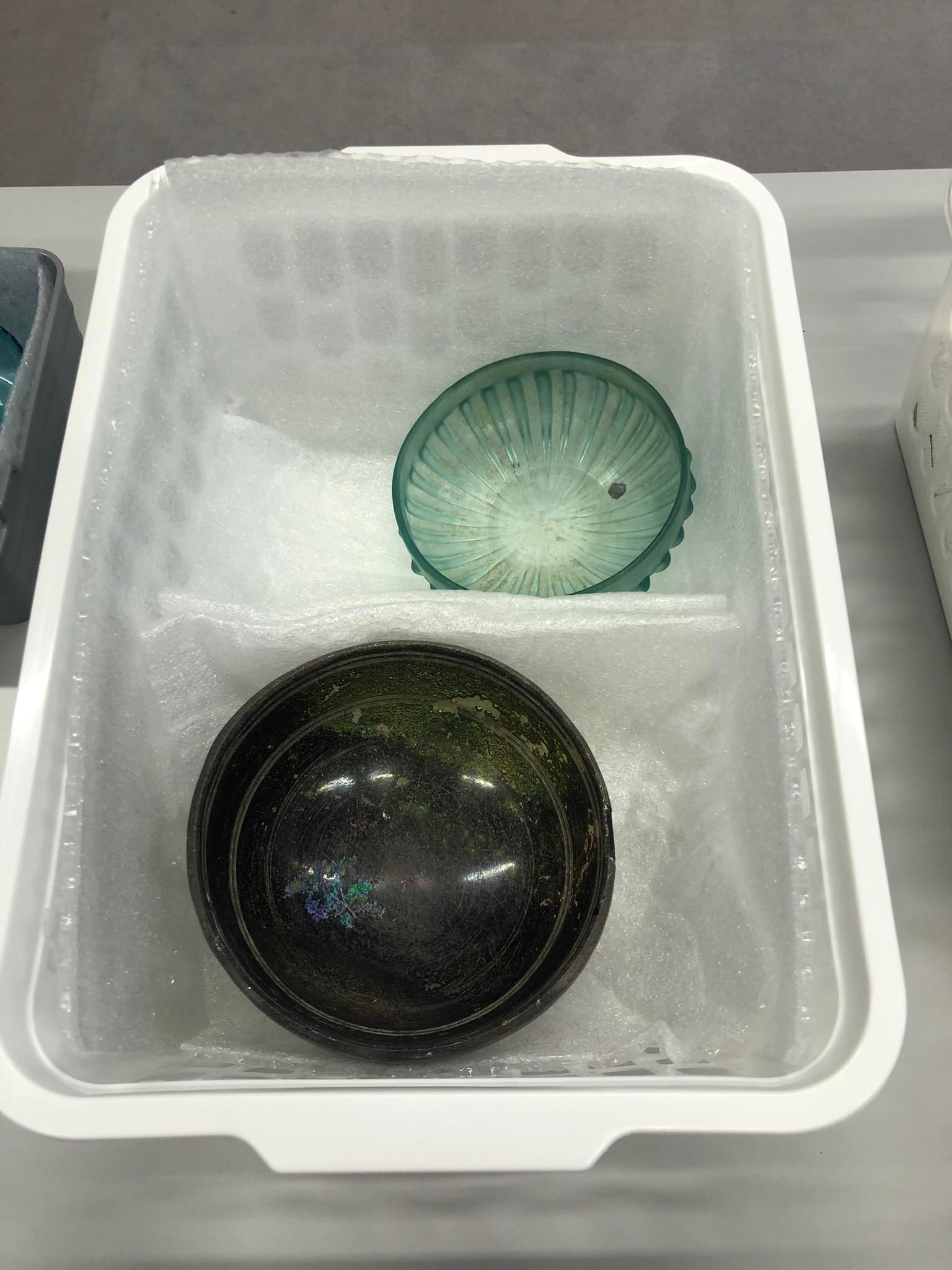
Figure 9. Two glass bowls
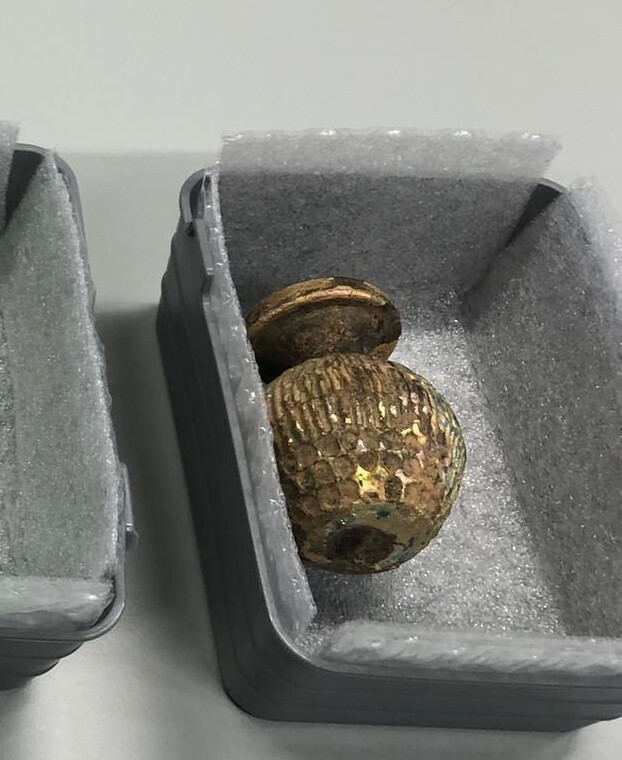
Figure 10. Gold glass object
Regardless of their level of engagement, it is interesting to note that the objects capture students’ attention. They spend most of the lesson looking at the objects, even when they are not in front of them or being discussed anymore. Handling objects, looking at them from different angles, and feeling their weight is students’ favorite part of the lesson. Wanting to interact more with objects, one of the students mentioned they wished to visit the depot. For these students teaching with objects is incredibly valuable, not only in their field, but also because it allows them to gain insights about objects (e.g. their weight), which they could not get from a picture.


